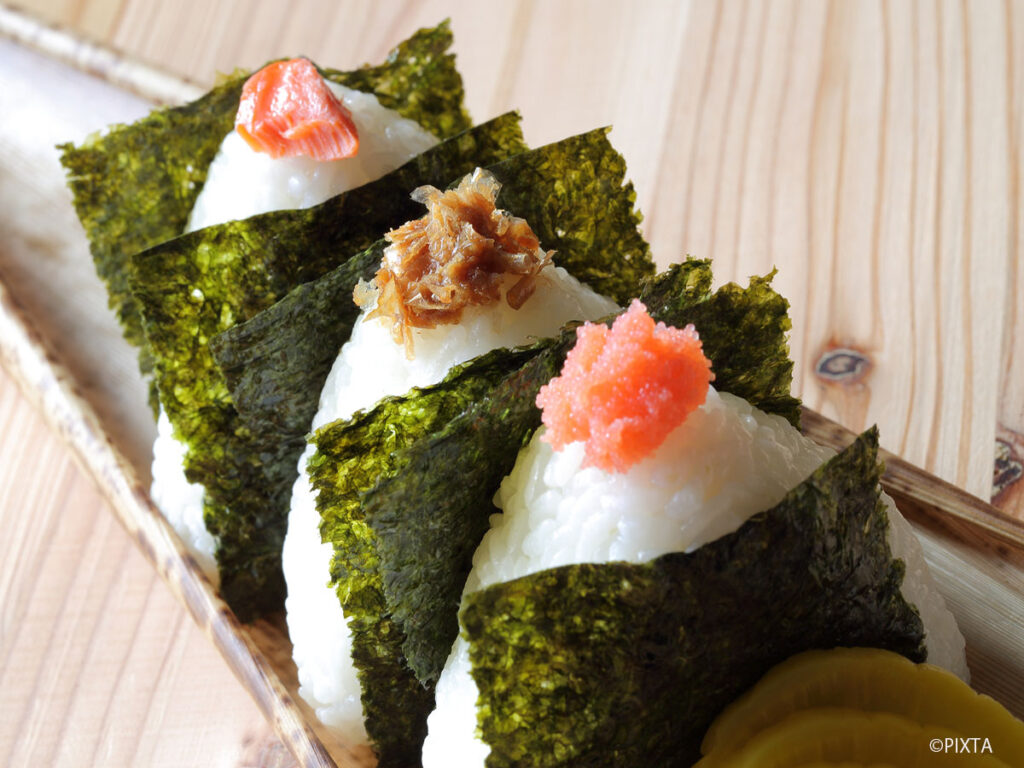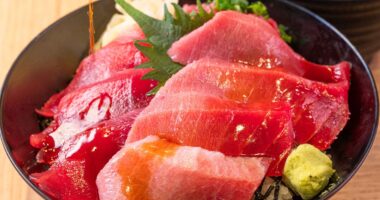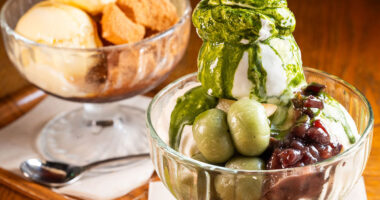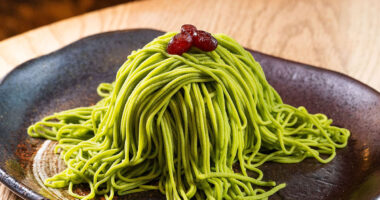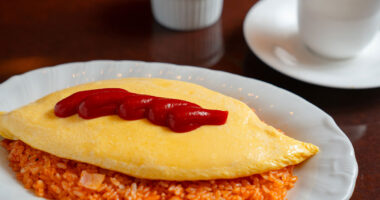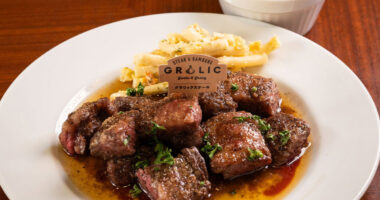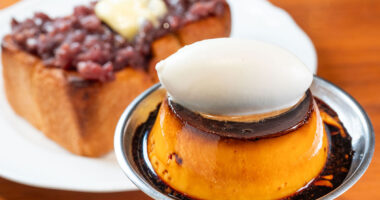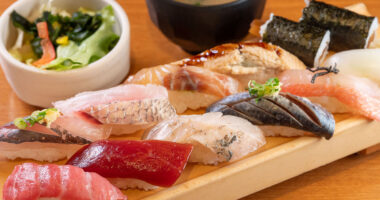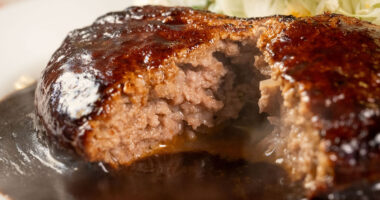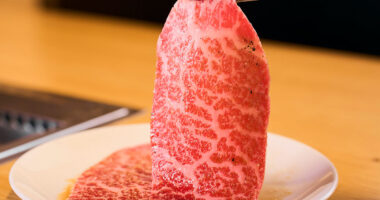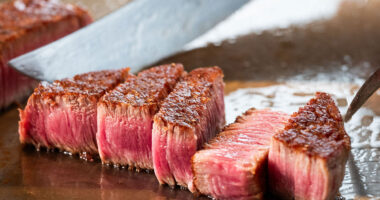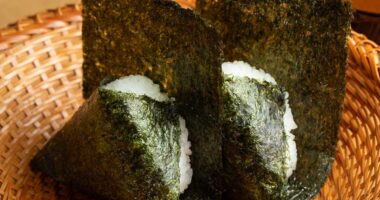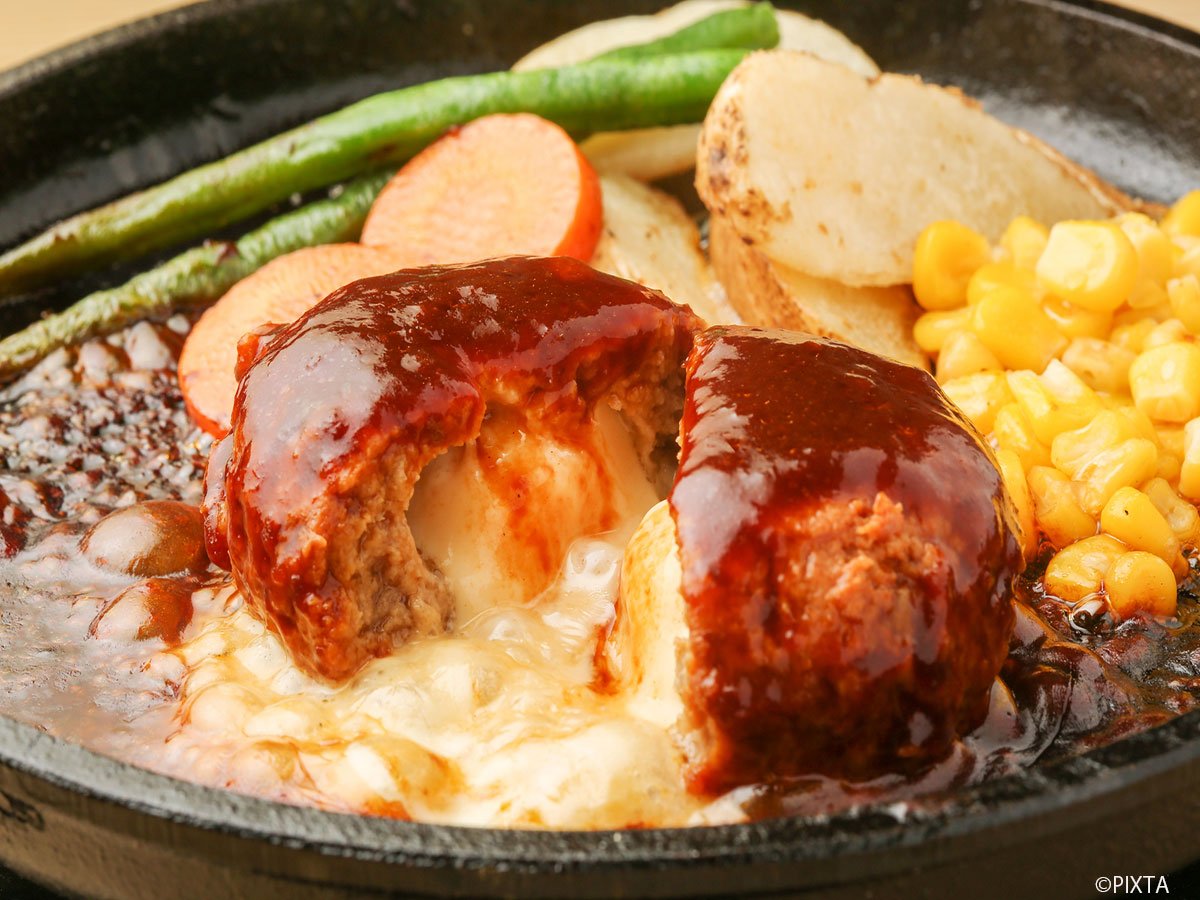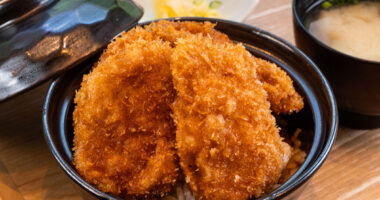Rice balls, known as おにぎり onigiri in Japanese, are maybe one of the most versatile and popular ready-to-go snacks in Japan. Wrapped in savory のり nori seaweed, onigiri pack a variety of different tasty ingredients as filling, so there’s bound to be a favorite type for everyone. Whether you’re looking for a snack to eat on the go, take with you to a picnic, or simply enjoy as a meal on its own, onigiri are not to be missed when trying out delicious food in Japan.
What are onigiri?
Onigiri are Japanese rice balls. They usually consist of cooked Japanese short-grain sticky rice packed into triangular or oval shapes, which are sometimes wrapped in nori seaweed. The rice is often seasoned with salt, and while they can sometimes be eaten plainly, onigiri are usually filled with a wide variety ingredients as fillings. These include different types of fish, meat, Japanese vegetables, and pickles.
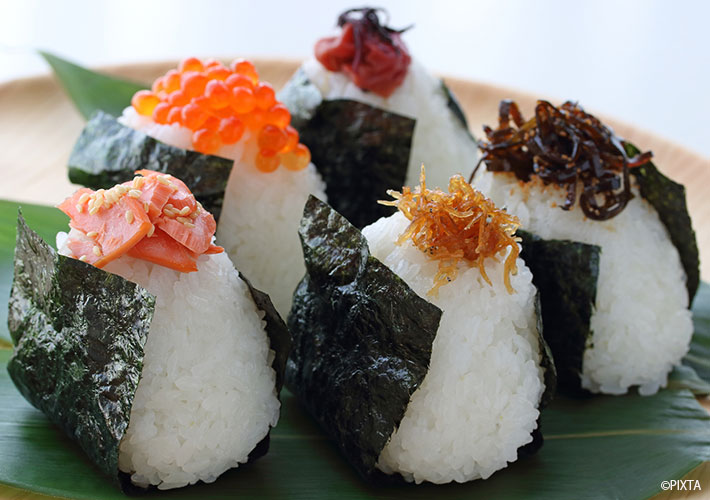
Onigiri come packed with a number of different Japanese flavors.
Where to get onigiri
Onigiri are widely available at a number of different types of stores throughout Japan. Convenience stores in Japan are an easy place to sample many different onigiri flavors and styles, typically between 100 JPY-300 JPY depending on the size of the onigiri and the quality of the filling. Supermarkets also carry onigiri for similar (although typically cheaper) prices.
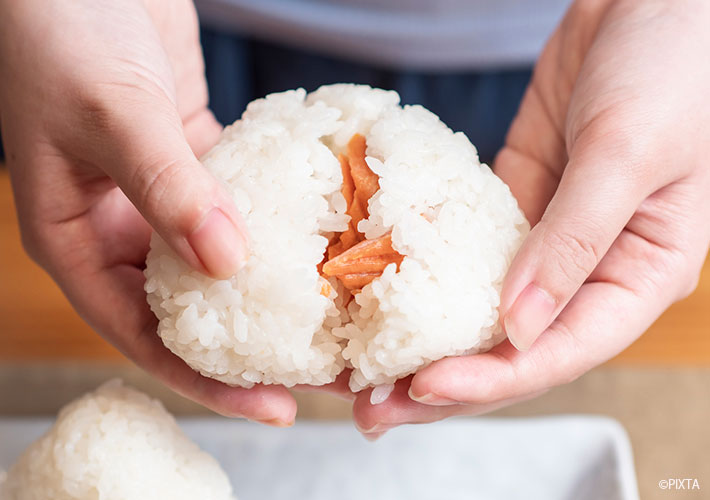
Specialty shops often make onigiri fresh to your order.
There are also specialty shops in Japan that focus on selling onigiri. These shops offer a more diverse variety of flavors and fillings and sometimes have a more extensive selection compared to convenience stores or supermarkets. Some specialty onigiri shops even allow customization, allowing you to pick out your preferred fillings and seasonings. Specialty shops also offer onigiri in the 100 JPY-300 JPY range, depending on the type.
Types of onigiri
梅干し umeboshi: Japanese salted and pickled plums are a common onigiri filling, and these rice balls are known for their tangy and salty taste. Umeboshi can be a bit of a challenging taste for first-time foodies on their own, but having them packed in an onigiri can make them more palatable.
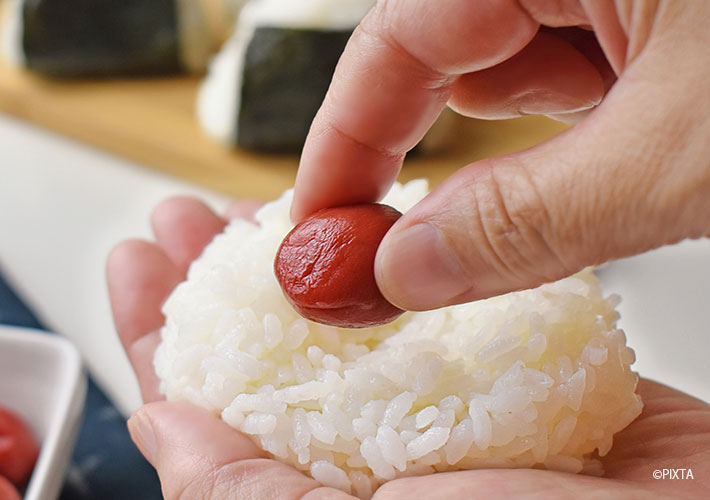
Pickled and salted Japanese plums are a popular onigiri filling.
しゃけ shakke: Grilled and salted salmon is a very popular filling for onigiri.
おかか okaka: Okaka, often called bonito flakes abroad, is simmered and smoked skipjack tuna.
昆布 kombu: Kombu is a type of seaweed usually used in flavoring dishes. Kombu onigiri use small strips of konbu seaweed to give a rice ball a rich umami flavor.
明太子 mentaiko: Mentaiko is spicy marinated pollock or cod roe, which makes for quite the spicy and briny onigiri.
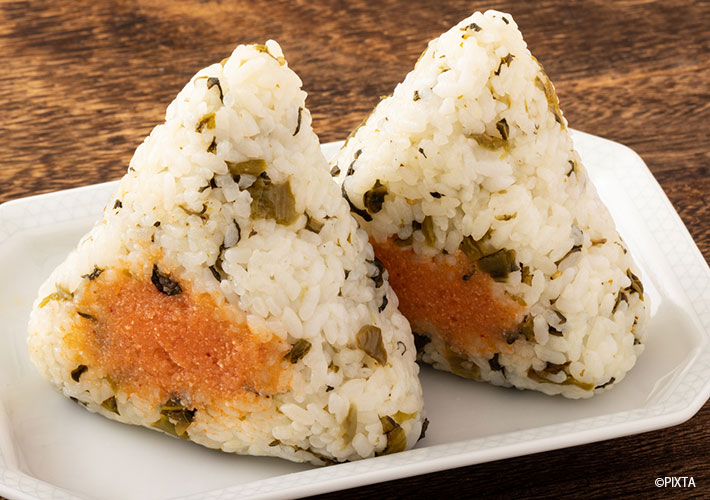
Mentaiko gives onigiri a spicy and fishy kick.
ツナマヨネーズ tuna mayonnaise: Savory and seasoned tuna mixed with mayonnaise or soy sauce is one of the most common fillings found in onigiri.
焼きおにぎり yaki-onigiri: Yaki-onigiri are grilled rice balls. After grilling them, the onigiri are brushed with soy sauce or miso and then grilled once more. You can often find them on the menu of izakaya pubs or yakiniku restaurants.
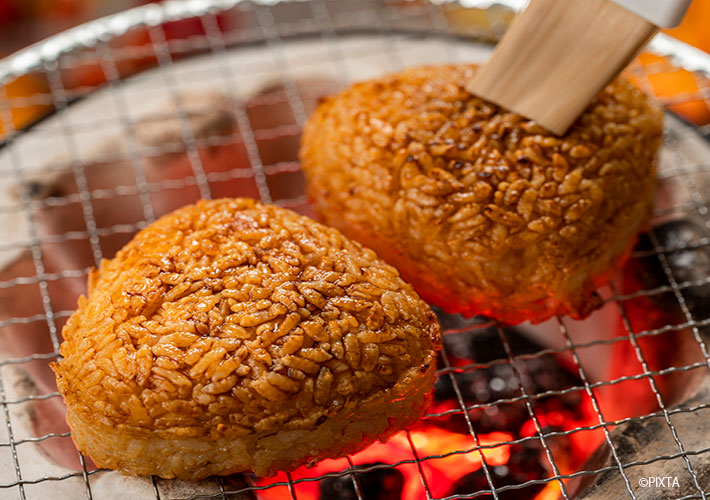
Yaki-onigiri provide a grilled and crispy twist on rice balls.
Tips for enjoying onigiri
With so many types of onigiri available in Japan, it’s highly recommended to try a number of them to find the flavor that’s right for you. Those who may struggle with more traditional Japanese fillings shouldn’t feel left out, either. Convenience stores in Japan often offer some more modern cooking-inspired onigiri, such as omelet, fried rice, and even wagyu varieties.
It should be noted that first-time visitors to Japan may struggle to open onigiri, particularly those sold at convenience stores and supermarkets. These onigiri come with step-by-step instructions on how to neatly remove the packaging. Pay attention to the numbered labels and remove those parts of the plastic packaging in order.
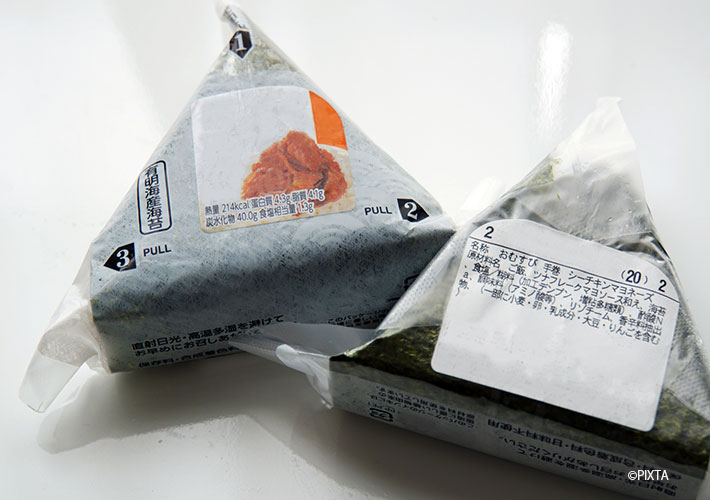
For onigiri purchased at a convenience store or supermarket, be sure to follow the numbered instructions to unwrap them smoothly.
While onigiri are typically eaten by hand, it’s important to be mindful of cultural etiquette. For instance, it’s usually not appropriate to eat while walking in public in Japan, so if a visitor buys an onigiri from a convenience store, they should find a place to sit and eat it.
In conclusion, onigiri offer a miniature and convenient way to sample a lot of celebrated Japanese ingredients on the go. Readily available throughout the country at many shops and restaurants, onigiri can be a satisfying sit-down meal or the perfect snack partner for a picnic or your bullet train rides. When visiting Japan, be sure to sample as many onigiri as you can to find your favorite rice ball.
